Preparation and characterization of novel nanofibrous composites prepared by electrospinning as potential nerve guidance conduits (NGCs)
Aleksandra Sierakowska-Byczek , Julia Radwan-Pragłowska
, Julia Radwan-Pragłowska , Łukasz Janus, Tomasz Galek
, Łukasz Janus, Tomasz Galek , Karol Łysiak, Mirosław Tupaj
, Karol Łysiak, Mirosław Tupaj , Dariusz Bogdał
, Dariusz Bogdał
 , Julia Radwan-Pragłowska
, Julia Radwan-Pragłowska , Łukasz Janus, Tomasz Galek
, Łukasz Janus, Tomasz Galek , Karol Łysiak, Mirosław Tupaj
, Karol Łysiak, Mirosław Tupaj , Dariusz Bogdał
, Dariusz Bogdał
Vol. 18., No.8., Pages 819-834, 2024
DOI: 10.3144/expresspolymlett.2024.61
DOI: 10.3144/expresspolymlett.2024.61
GRAPHICAL ABSTRACT
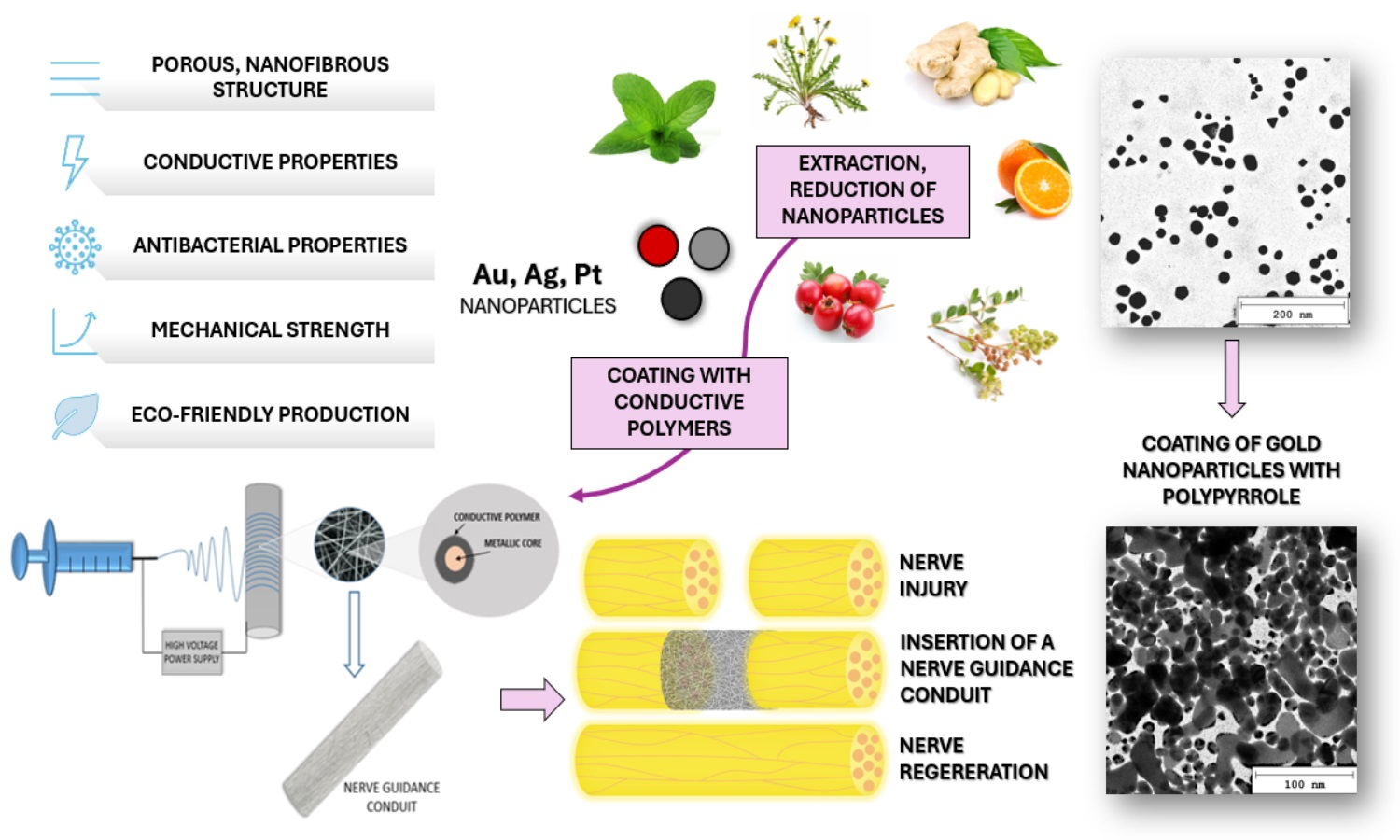
ABSTRACT
Appropriate protection and guiding are crucial during peripheral nerves repair. New generation nerve guidance conduits (NGCs) should not only provide mechanical support for the damaged nerve but also support healing processes. One of the most promising tissue regeneration applications is fibrous biomaterials since they are characterized by high porosity, flexibility, and strength. Additionally, they enable cell adhesion and proliferation. In this study, novel fibrous nanocomposites were obtained by applying the electrospinning technique, using polylactic acid (PLA) as a polymeric matrix which was further modified with metallic nanoparticles coated with conductive polymers. Such an approach resulted in the obtainment of biomaterials with a potential ability to conduct nerve impulses. The chemical structure of the obtained composites, as well as the morphology of ready products and separate nanocomponents, were investigated using Fourier-transform infrared spectroscopy (FTIR), transmission electron microscope (TEM) and scanning electron microscope (SEM) techniques. Furthermore, conductive and swelling properties in various media were determined. Finally, biomaterials were confirmed to be non-cytotoxic to L929 mouse fibroblasts and 1321N1 human glial cells. Based on the presented results, it can be concluded that nanofibrous nerve guidance conduits have all the key properties in the process of peripheral nerve regeneration and may constitute an important step in novel NGCs development.
RELATED ARTICLES
Mehmet Selim Demirtaş, Mrinal C. Saha
Vol. 18., No.8., Pages 851-867, 2024
DOI: 10.3144/expresspolymlett.2024.63
Vol. 18., No.8., Pages 851-867, 2024
DOI: 10.3144/expresspolymlett.2024.63
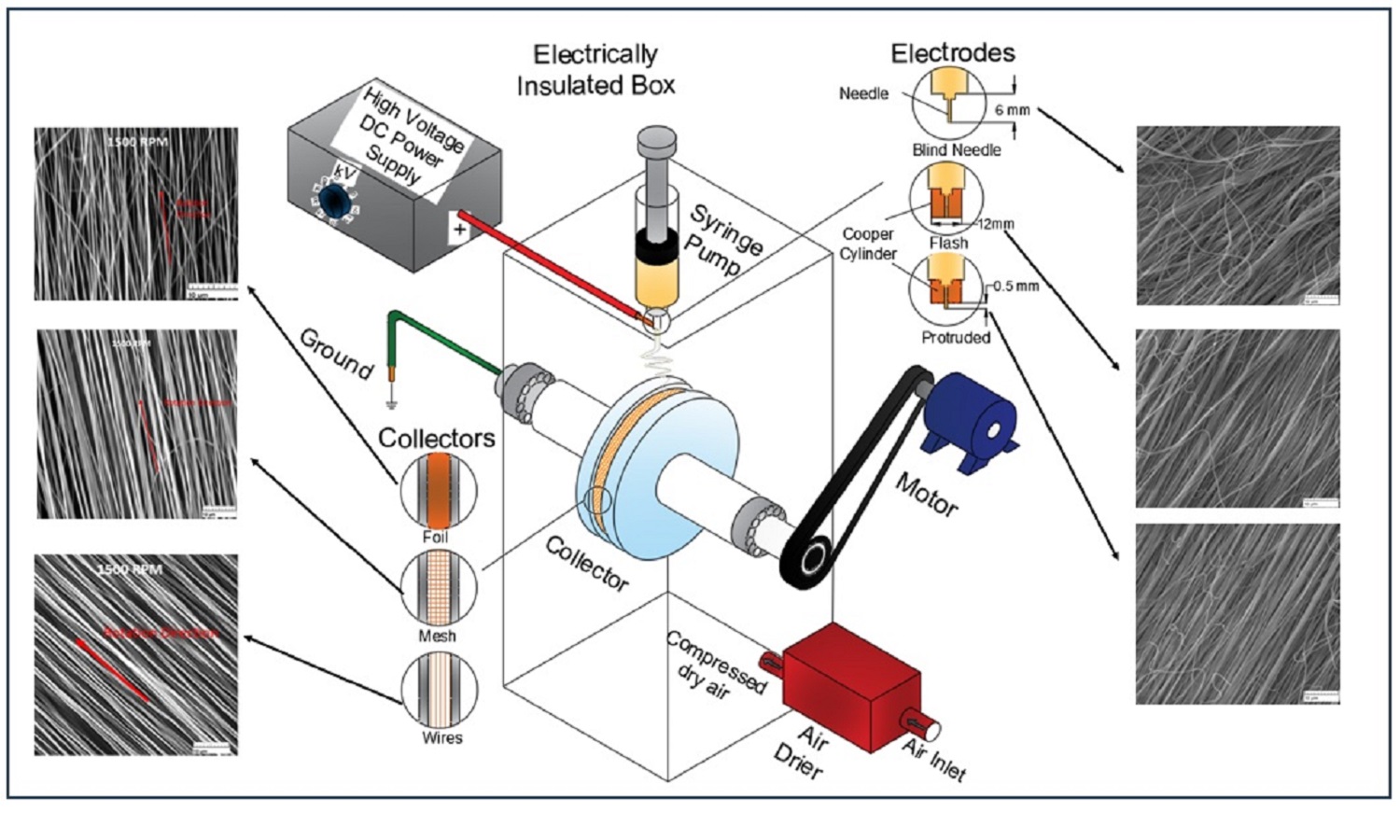
Nanomaterials, particularly nanofibers produced through electrospinning, have garnered significant attention due to their unique properties and diverse applications. This research explores the influence of collector design, electrode geometry, and collector speed on the properties of electrospun polyacrylonitrile (PAN) nanofibers. Finite element analysis (FEA) was employed to simulate electric fields, revealing the impact of collector geometry on field intensity. The experimental setup, enclosed in an isolated chamber, employed various collector types and electrode configurations. Scanning electron microscope (SEM) analysis showcased the effect of collector speed on fiber alignment and diameter. Furthermore, FEA simulations elucidated the role of electrode geometry and voltage in shaping the electric field, impacting fiber properties. The study introduces a novel, in-house method for producing highly aligned nanofibers and provides insights into optimizing electrospinning parameters for enhanced fiber properties. A testing protocol is devised to minimize surface damage when conducting mechanical tests on nanofiber films, employing a dynamic mechanical analyzer (DMA). Mechanical testing demonstrated the correlation between alignment and tensile strength. Overall, this research contributes valuable insights for tailoring electrospinning processes for tissue engineering and energy storage.
Konstantin Vadimovich Malafeev, Olga Andreevna Moskalyuk, Vladimir Evgenyevich Yudin, Dmitry Nikolayevich Suslov, Elena Nikolaevna Popova, Elena Mikhaylovna Ivan’kova, Alena Alexandrovna Popova
Vol. 18., No.3., Pages 296-308, 2024
DOI: 10.3144/expresspolymlett.2024.21
Vol. 18., No.3., Pages 296-308, 2024
DOI: 10.3144/expresspolymlett.2024.21
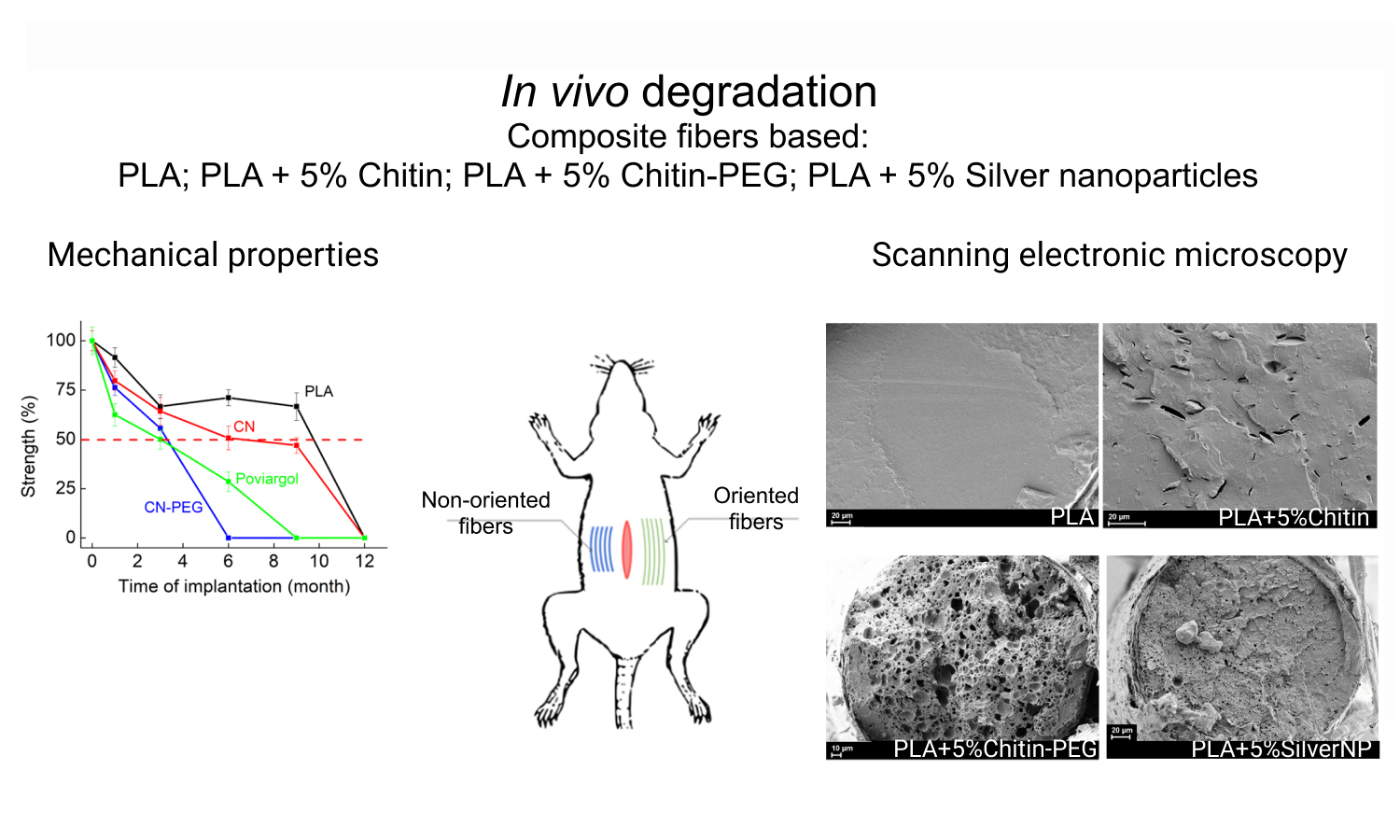
The rates of in vivo bioresorption of composite monofilaments based on polylactide (PLA) containing chitin nanofibrils of two types (pure chitin (CN) or chitin modified with poly(ethylene glycol) (CN-PEG)) or silver nanoparticles stabilized with poly(N-vinylpyrrolidone) (Poviargol) were studied. The in vivo bioresorption rate and its dependence on the degree of orientational drawing of the samples (which varied from 1 in non-oriented samples to 4 in oriented samples) were investigated up to 12 months after implantation. Bioresorption of the samples was monitored using differential scanning calorimetry, scanning electron microscopy, and mechanical tests. Using the differential scanning calorimetry (DSC) method, it was shown that there is a gradual decrease in molecular weight due to a decrease in the temperatures of phase transitions and changes in peak shapes. It has also been shown that the addition of fillers containing water-soluble polymers accelerates the bioresorption of composite sutures. A thread made from pure PLA lost half its strength by the 9th month of implantation, whereas for threads with the addition of CNPEG or Poviargol, this happened after 3.5 months. This causes leaching of water-soluble agents and changes in the supramolecular structure of the filament. This study shows the promise of using these composite threads as a suture material.
Kolos Molnár
Vol. 18., No.3., Pages 243-244, 2024
DOI: 10.3144/expresspolymlett.2024.17
Vol. 18., No.3., Pages 243-244, 2024
DOI: 10.3144/expresspolymlett.2024.17
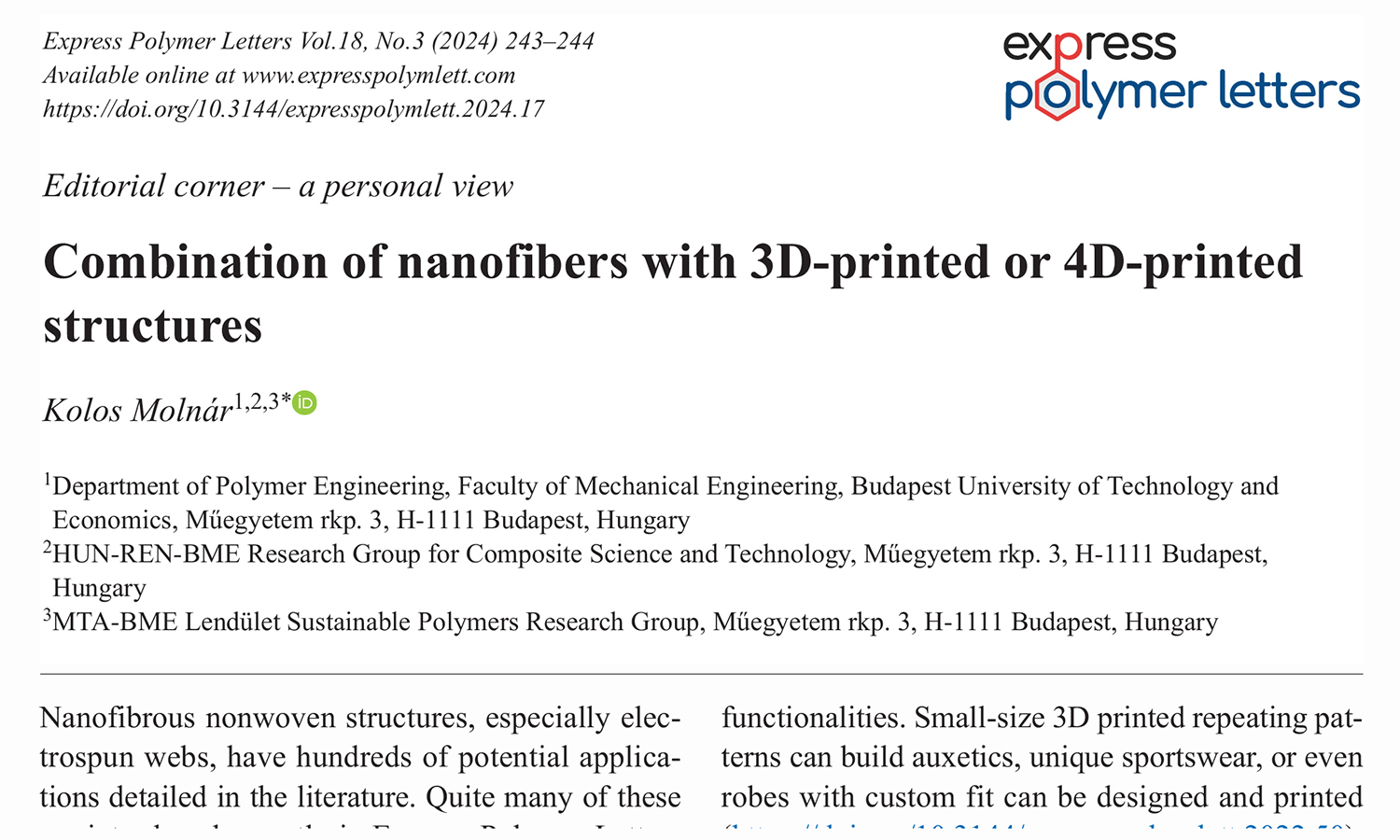
This is an editorial article. It has no abstract.
György Marosi, Katalin Bocz
Vol. 18., No.2., Pages 116-117, 2024
DOI: 10.3144/expresspolymlett.2024.9
Vol. 18., No.2., Pages 116-117, 2024
DOI: 10.3144/expresspolymlett.2024.9
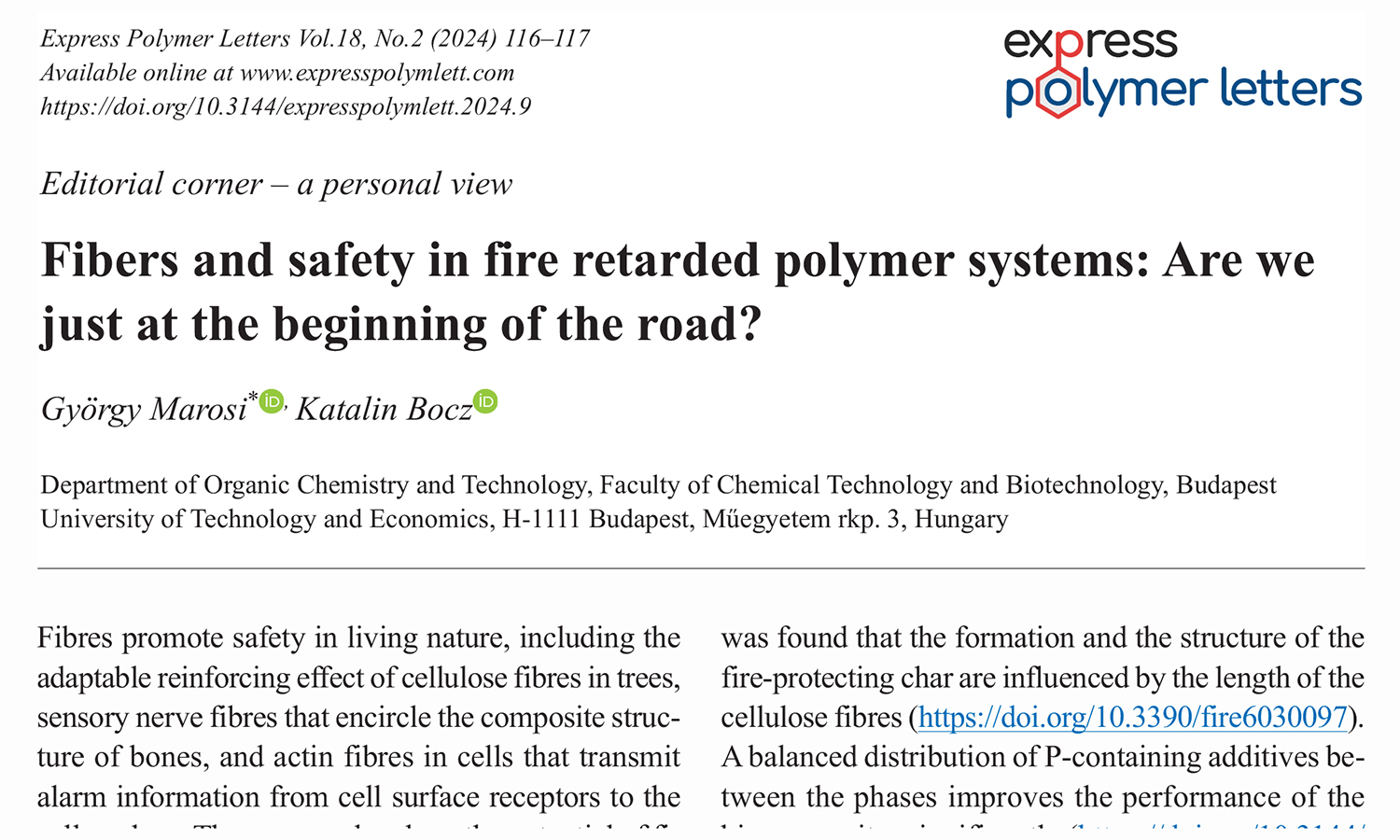
This is an editorial article. It has no abstract.



